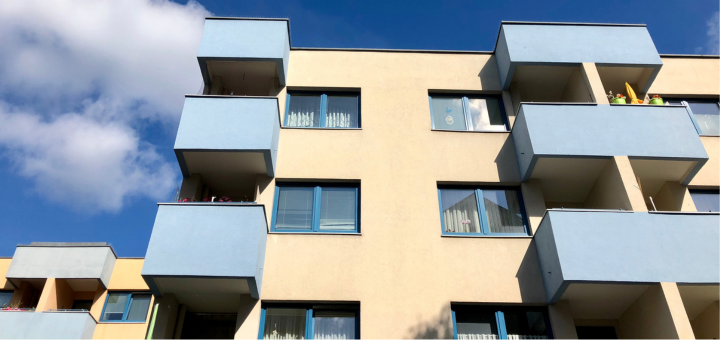This series takes a deeper look at the attributes that Australians believe makes somewhere a good place to live, where our values and local area experiences differ, rationalisations and implications. In this article we discuss the provision of ‘affordable decent housing’.
This blog is written to support the launch of our latest offer, Living in Place. Data informing this article was drawn from the Ipsos Life in Australia Survey. Living in Place is delivered in partnership with Ipsos.
How important is ‘affordable decent housing’?
‘Affordable decent housing’ is the 2nd most important attribute that Australians believe contributes to making somewhere a good place to live, with 51% nominating among their top five liveability attributes – behind ‘feeling safe’ (72%) and ahead of ‘high quality health services’ (48%). ‘Access to the natural environment’ (47%) and ‘a diverse range of shopping, leisure and dining experiences’ (33%) were the 4th and 5th most important.
Who places a high value on ‘affordable decent housing’ and how do we feel about it in our local areas?
Despite being nominated as the 2nd most important liveability attribute overall, Regional Australians – and especially those who make their home in small town & rural LGAs and mining and report areas – placed a higher value on the provision of ‘affordable decent housing’ relative to their regional neighbours, and higher again when compared to Metropolitan Australians.
In addition to placing somewhat of a lesser value on this attribute, residents of inner-city and middle suburban local government areas also reported worse local area experiences regarding the provision of ‘affordable decent housing’ when compared to those who call the outer suburbs and fringe & peri-urban areas home.
Residents of regional centres, regional coastal and small town & rural areas reported similar local area experiences regarding the provision of ‘affordable decent housing’.
The charts below have all the detail (click the chart to view in full screen).


What does this tell us?
Understanding the provision of ‘affordable decent housing’ goes well beyond the dwelling. It seeks to contextualise the community’s view on their home with two additional features – both of which are critical to informing public policy and private sector directions: the investment and serviceability (represented in the attribute as affordable) and quality (represented as decent). When combined, those elements (affordable + decent + housing) bring a more critical lens to the topic that Australians consistently nominate as one of the most important factors that make somewhere a good place to live.
Discussion around ‘affordable decent housing’ is always in sharp focus. One could say it’s a national obsession. And there’s data to prove that theory, and more data to suggest even greater interest in the topic.
Despite only a fraction of the community ever being in the market to sell, buy or rent a home, real estate websites are among those most visited – with recent reports showing realestate.com.au to be the 11th most popular website in the nation – receiving more monthly visits than national media and digital content provider, abc.net.au. And, as housing values have surged in recent months on the back of record low interest rates and government incentives, so too has community interest in the topic – with Google searches related to ‘house prices’ increasing month on month for the past several months. Auction watching is a national sport and, in my circle at least, conversations regarding the housing market elicit all manner of emotions – some observe, some bask, some lament and deride the state of the market – often informed by their personal housing circumstance.
Over the long-term, backing the housing horse as an owner has, for the most part, been a sure thing. While there’s always conjecture around the specifics, an average house in Sydney in 1990 would have set you back around $150K. Today – all things being equal – that house is probably worth around $1.1M. A massive ROI with no tax incurred on the way out if you’ve used the dwelling as your home base. Safe as houses, as they say.
So while this has generated immense wealth for many Australians (that average house has returned the owner an average of $600 per week, every week, for the past 30 years – thank you very much), it’s also created a wealth chasm and, when you look at the ever expanding gap between house prices and household income, you could be mistaken for thinking that in 2021 you need to take an elevator just to get to the bottom of the property ladder.
So what about renters? Despite one out-of-every three homes in Australia being rented and the best efforts of advocacy groups to highlight the flow-on effects of housing market machinations for this cohort, their story and needs can often be lost among the noise. Rising house prices tend to mean higher rents and, with income levels on the flatline, reports are emerging that highlight how renters have and will continue to be hit-harder by COVID-19 pandemic impacts, than those who own or have a mortgage on their home.
Given its importance and somewhat divise nature, understanding community perspectives on housing goes a long way to informing our knowledge of communities and places. To this end, policy makers across all levels of government should be interested in monitoring how Australians feel about the provision of ‘affordable decent housing’ in their local area.
How Living in Place can help you understand how your residents feel about ‘affordable decent housing’ in their local area…
Living in Place can assist local governments to understand the relative value your community places on ‘affordable decent housing’ and how your residents feel it in their local area. Our analysis will identify whether your residents believe ‘affordable decent housing’ is an attribute where local area experiences need to be maintained or improved to advance quality of life across your LGA, and our online reporting platform will give you the ability to investigate how your residents’ views about this topic manifest within (e.g. compare the views of renters with home-owners), across (small area geography) and beyond (external benchmarking) your LGA.
Visit our dedicated Living in Place website to learn more about the offer, where you can take a guided video tour of our best-in-class online reporting and exploratory platform, views.id. We’ve also written a blog discussing our deeper thinking the need for the offer, and published a case-study about how Living in Place is helping the City of Ipswich to make more resident centric decisions. Feel free to book a meeting a time convenient to you’re keen to learn more.











